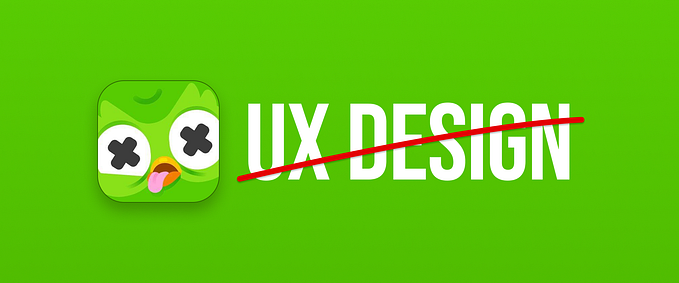A designer’s view on organisation politics
More and more companies are realising the value of good design. In my work as a service designer working in a design consultancy, I see an increasing interest from our clients to work in close collaboration with us and to build cross-department core teams that can carry the project within the organisation. Including every part of the business that our project is involved with, encourages more opportunities to design useful solutions and get buy-in. This means I get to experience first-hand, something that is usually implicit 🥁… politics.
Literature exists about how to deal with politics as a leader but what does it mean to deal with politics as a designer?
A definition of politics and why designers should care
According to HBR, politics in an organisation “refers to a variety of activities associated with the use of influence tactics to improve personal or organisational interests.”
Many people think of politics as negative, and associate this with the behind-the-scenes plays that can cause projects to derail. In my background as an industrial designer working with either marketing or R&D, I have experienced politics surfacing as biased feedback and unexpected requests. Now conducting strategy, service design and UX projects with large organisations, I need to deal with various stakeholders that can have conflicting agendas, as it is often the case in siloed organisations. Another manifestation of politics is resistance; from business stakeholders carrying connex initiatives that may feel threatened by our project, or due to friction caused by broader strategic changes in the organisation. These might be out of our scope, yet they have a profound effect on the project’s dynamics.

I once worked on a project that required us to organise a series of co-creation workshops across the business. We were struggling to attract participants, and the ones who came were not fully engaged. The company was going through a reorganisation, and, after plenty of struggles, we realised that cross-department workshops were not really suited to the political climate. We should have opted for another approach to gather input, rather than sessions where participants were required to expose their opinions to the whole group.
Despite this, I do believe there is a lot of value to be gained from organisation politics. A diversity of points of view leads to powerful solutions and design methodologies are well-suited to deal with complexity. At its core, service design is about identifying and defining the right challenges to solve. Politics have a deep effect on our ways of working, the processes we adopt and, ultimately, the products we create. As designers, it is not productive to consider politics as simply an annoying side-effect of company dynamics. Rather, we should focus on politics as an integral component of our projects that help us to deliver effective solutions.
So, how can we design for organisation politics?
Make politics part of your design research 👀
As with any design project, ethnography and empathy will help you investigate organisational dynamics and, more importantly, the cause behind them. Who are your stakeholders? What motivates them? What are their objectives? Who are their own stakeholders? What are their KPIs and who do they report to? What are their pain points?
Nobody gets up in the morning thinking of making your project harder…so aim to understand your stakeholders as humans. Whether it is through casual conversations or formal research interviews, this will give you precious input on how to navigate the project, tailor your deliverables to suit their needs and understand their motivations. To dig into the latter, one of my favourite questions to ask is: “what is your favourite part of your job?” This is a good start to understanding one’s interests while not getting too personal.

As we move from the traditional client-supplier relationship to work more and more in partnership with clients, we want to engage with our stakeholders (rather than manage them). Understanding their motivations and interests helps to comprehend the role they want to have in the project and make the best use of their time.
Side note: Don’t forget that the base of any meaningful human conversation is trust. Trust is never a blank slate; so be aware of any legacy or past experiences that can shape one’s perception. Start the relationship right by setting the tone for the collaboration as you begin the project.
Tip: During the kick-off, go beyond the “what-is-your-name-what-is-your-title” type of introduction and spice it up with personal or fun facts. This helps the team to understand who everyone is, and foster empathy by displaying the human behind the work persona. I like to use the “2 truths one lie” energizer or craft a personal question related to the project topic.
Make the implicit explicit and SHARE IT (yes!) 👋
Visualisations are, in my opinion, the best way to make sense of complex, ambiguous situations. They uncover unseen connections and articulate relationships within your project and their ties to the wider context. What you are aiming for here is to have a tangible document to foster an interesting conversation, whether it is a quick whiteboard diagram or a designed artifact. Depending on the context, such visualisations can also be called an ‘actors map’, ‘stakeholders map’ or ‘eco-system map’.
To get started, some questions to ask yourself are:
What different types of relationships exist?
Are they implicit or formal (contractual)?
At which level do the relationships happen (individual, team, department, cross-organisation)?
Are those relationships different depending on processes?
Does it make sense to characterise those relationships (going well, neutral, not going well?)
Tip: using insights from your research, don’t be afraid to go wide and map the broader context that will show “cause to effect’.
Beyond dynamics themselves, mapping existing initiatives that overlap with the scope of your project can be powerful. First, this will ensure you don’t have any blind spots in your research and that you can build upon what already exists. Secondly, this will illuminate who to include in your project to leverage their knowledge, and potentially prevent ‘stepping on someone’s toes’.
Tip: List existing initiatives in your user journeys or process blueprints. They show the great work already being done and are opportunities to build upon.
Once your visualisations are complete, it is time to share your work. Showcasing political relationships can be daunting at first… You might ask yourself: “What will they think? Will I offend anybody?” The truth is, if you are able to notice it after a few weeks of research, your stakeholders are probably aware of it too. Perhaps even better; it can be a relief to see one’s experience and challenges documented in black & white. It is not about pointing fingers, but about honestly representing the situation and its causes so we can design with or around them.

Often, this type of document does not exist as most organisations solely map their overall structure… so it can definitely be highly valuable and bring a few “aha” moments. During a project with a multi-department stakeholder team, one of our findings related to the different mindsets in the organisation that were hindering the end-user experience. While this finding on its own can feel like “common sense”, being able to showcase visually how the type of contractual agreements between teams caused this did kick-start tangible initiatives to set shared goals.
Another fear might be: “What if I got something wrong?”. Sharing your map with your stakeholders as a living document will help you, first to complete and correct any inaccuracies. Secondly, it can support engagement, collaboration and foster conversations about what to do about it!
Which leads us to the last point…
Designing with the politics in mind 🧞♂
Here we can distinguish 3 aspects:
1 — the solution you are designing
Being aware of your stakeholders’ different KPIs and objectives will help you to craft holistic solutions that can solve different needs.
2 — the process
During co-creation, make sure you tailor activities to the organisational climate. By setting a team spirit with common goals and making sure every point of view is expressed and captured, you will set the tone for collaboration.
3 — the deliverables
Your stakeholders need to report to or get buy-in from other parts of the organisation to make the project a reality. You can support them by crafting deliverables that help to communicate and convince with the appropriate format and message.
As the value of design gets increasingly recognised, designers tackle more and more strategic and complex pieces of work that require cross-department; even cross-organisation collaboration. This means we need to address politics as a full component of our design projects by researching with empathy, visualising and strategizing how to design with such dynamics so that we set ourselves for success. 🚀
I am a service designer with a passion for visual thinking, making complicating things simple and building positive experiences for humans and business. Part of the team at Accenture Interactive Amsterdam.
Hopefully, this article based on my personal experience gives you food for thought about how to handle political dynamics in your design project. I’m very curious to hear return on experience from other professionals, especially from an in-house perspective. Ping me here or say hi at marjoriebroudieu@gmail.com.
Special thanks to Leanne Pickering, Loren Hakeney & Katarina Bagherian








